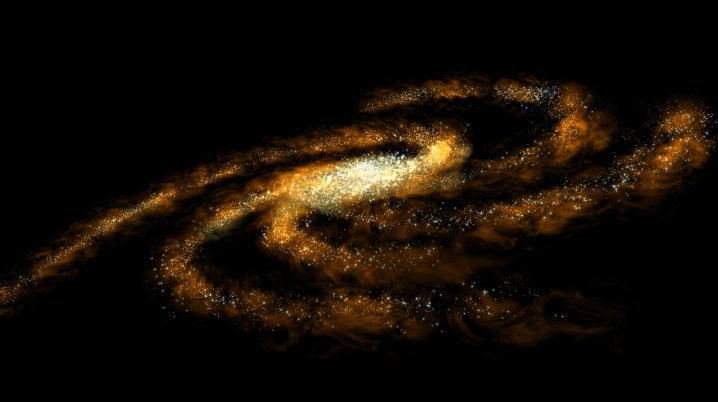
It’s not as if there’s a scale big enough to weigh the entire galaxy — but astronomers have now calculated the approximate mass of the Milky Way.
Researchers using NASA’s Hubble Space Telescope and the European Space Agency (ESA)’s Gaia satellite have calculated that our galaxy weighs 1.5 trillion solar masses, or 1.5 trillion times the weight of our Sun. Even though there are a mind-bending 200 billion stars in the galaxy, these actually only account for a small fraction of the total mass. The mass doesn’t even mostly come from the enormous supermassive black hole at the galaxy’s center, which is an epic 4 million solar masses. That’s a lot, but it’s still only a tiny sliver of the total.
The majority of the mass comes from dark matter, the subatomic particle which has been theorized to exist but has never been observed. We know that such matter must exist to explain the way that our galaxy and others move, but it has proven elusive and difficult to identify despite many attempts. This dark matter acts like scaffolding for the universe, keeping stars in place in their respective galaxies.
This estimate was calculated by looking at the movement of globular star clusters — groups of hundreds of thousands of stars which cluster together near the center of the galaxy. Hubble and Gaia both observed how these clusters were affected by gravity to create estimates of how much mass must be pulling on them. Gaia could create a highly accurate three-dimensional map that was very broad, while Hubble can only look at a smaller field of view but can see farther. The two together were able to create a map of the movements of 34 globular clusters up to 65,000 light-years away and a further 12 clusters up to 130,000 light-years away.
Scientists can use this information to get more accurate cosmological data when performing calculations. “We want to know the mass of the Milky Way more accurately so that we can put it into a cosmological context and compare it to simulations of galaxies in the evolving universe,” Roeland van der Marel of the Space Telescope Science Institute (STScI) in Baltimore, Maryland, said in a statement. “Not knowing the precise mass of the Milky Way presents a problem for a lot of cosmological questions.”
Editors' Recommendations
- Marvel at the beauty of our galaxy with most detailed map of Milky Way to date
- See the most detailed view yet of the center of our galaxy
- Hubble captures a peculiar galaxy pulled out of shape by a nearby satellite




